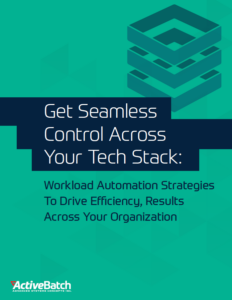Gain Control Of The Cloud With The Right Tools And Tactics
The proliferation of cloud platforms and services is causing new challenges that slow IT down. The right tools and tactics can simplify cloud management.

Cloud platforms and services are used in just about every segment of the organization, and have been around since the 2000s. But the cloud isn’t done evolving.
Gartner analysts expect that cloud computing won’t be pervasive until 2025. By that point, 85% of enterprises will be taking a cloud-first approach for any new projects.
The constant growth of cloud computing is already straining IT teams. A recent survey report from Dynatrace found that 63% of large enterprises now have cloud environments that “surpass human ability to manage,” with 74% of CIOs saying that cloud expansion has led to more manual tasks and time spent keeping the lights on.
Cloud platforms and services are critical to building scalable, elastic environments, and underpin most new technologies and digital services. But for all of that capability, the cloud can also be a headache, creating complex environments that have to meet a bevy of compliance and regulatory requirements.
Integrating Cloud Platforms And Services
Much of the problem is that organizations often rely on multiple cloud providers (one provider might offer a better AI platform while another might offer more support for containers). These cloud providers do not readily integrate with competing services. So IT teams fall back on custom scripts and a handful of automation tools to manage processes and data between multiple cloud platforms.
At the same time, IT still has an on-prem data center to manage, that needs to communicate in real-time with the organization’s colocation centers.
In this case, a third-party tool can be used as an integration hub, enabling IT to manage workloads and processes across complex, hybrid- and multi-cloud environments. For example, workload automation platforms can provide direct integrations with cloud platforms including AWS, Azure, VMware, and more.
For cloud services, API adapters can then be used to incorporate API jobs into cross-platform processes managed through the workload automation platform. API adapters make it possible to rapidly create connections and extensions to third-party services. API adapters can also support a variety of content and authentication types, and can include features such as testing, templates, and wizards to streamline creation.
By integrating multiple cloud vendors and services through a single touch point, IT teams can more easily develop, deploy, monitor, and manage cloud environments.
Automate Cloud Resources
IT environments can span on-premises and multi-cloud systems, and often include hundreds of servers for processing data and workloads. Large environments are impossible to manage manually, especially when scalability is needed to meet dynamic business needs.
Provisioning and deprovisioning virtual and cloud-based servers should always be an automated process. Machine learning algorithms can be used to intelligently provision and deprovision servers based on historical data and real-time demand, greatly reducing the need for manual intervention while preventing unnecessary expenses due to idle servers.
Streamline Compliance
Sensitive data such as personally identifiable information has to be moved between departments, client and internal servers, and even data centers in different locations. This means that data must comply with a range of internal and external regulations that continue to evolve.
Applying compliance changes to individual processes isn’t feasible. But by coordinating processes from centralized platforms, your team can manage governance across your environment. This includes setting standards for permissioning, auditing, and access. If your team uses process templates, one change can be cascaded to hundreds of processes with a single click.
Seamless Control Across Disparate Environments
The right automation platform should enable your team to manage any digital process from one pane of glass, regardless of where data might be stored, on-premises or in a public cloud or private cloud. With a unified automation framework, IT teams can rapidly integrate new tools and technologies, develop more efficient and reliable cross-platform processes, and drastically reduce the number of manual tasks IT must complete.
You can read about more tactics and strategies for efficient automation environments in our latest ebook, “Get Seamless Control Of Your Entire Tech Stack: Workload Automation Strategies To Drive Efficiency, Results Across Your Organization.”
Don’t Settle For Unreliable Automation
Improve reliability and extensibility across your environment with the right workload automation strategies and tools.








